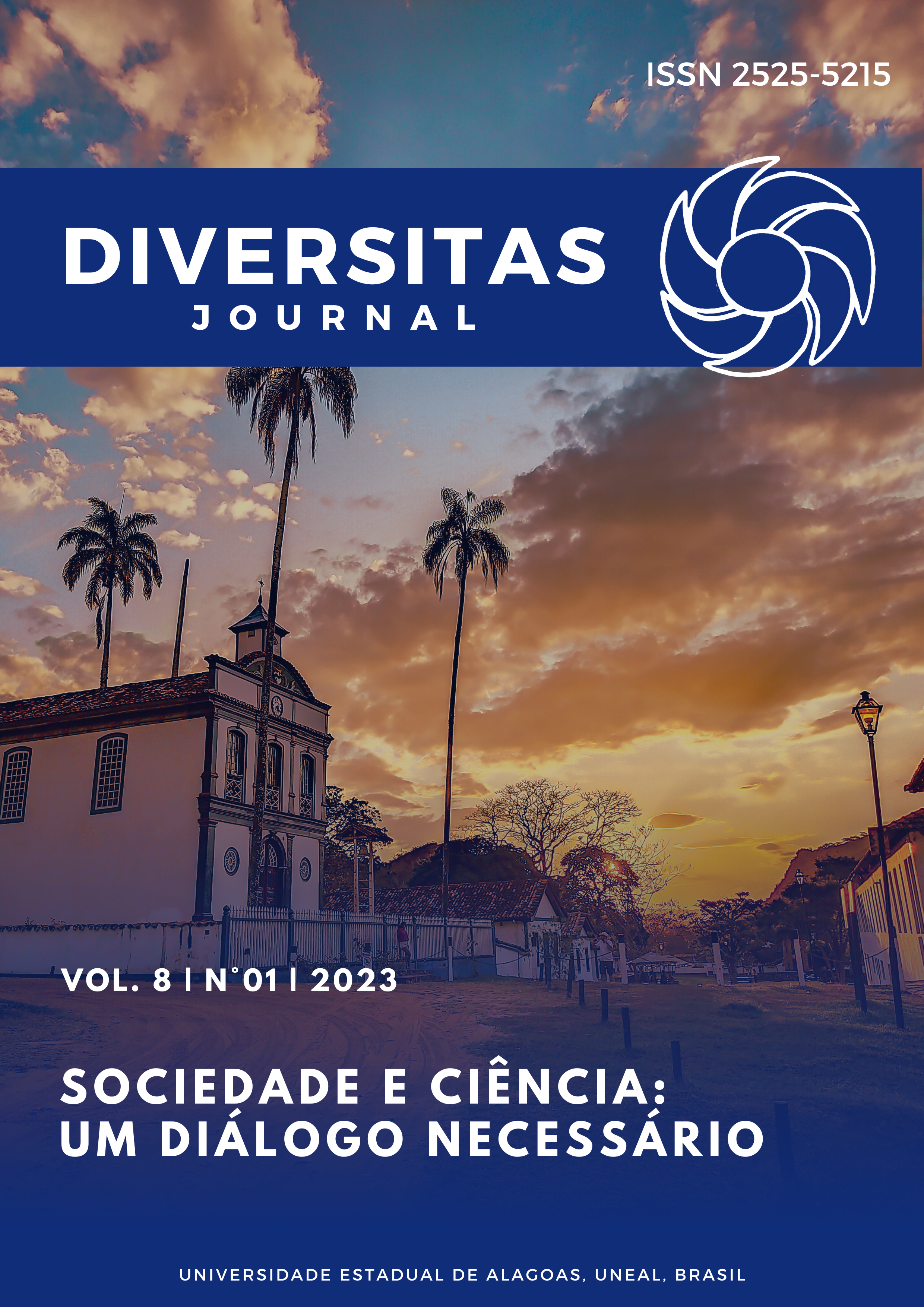Macronutrients in thehumanmilkof a womanundergoingbariatricsurgery: a case report
DOI:
https://doi.org/10.48017/dj.v8i1.2418Keywords:
Bariatricsurgery, nutritionaldeficiency, humanmilk.Abstract
Breast feeding is considered the best nutrition al source for the first six months infant's life, but lactating women undergoing bariatric surgery (BS) should be monitored more carefully. BS favors food restriction and more nutrition of specific nutrients, causing a deficient nutritional frequency, which can be a factor that can change the content and energy of human milk. This is a case report, consisting of a pregnant woman who became pregnant two months after gastric bypass bariatric surgery, which aim store port and evaluate the characteristics of human milk. This case report corroborates with the data available in the current literature, suggesting that BS may influence the nutritional composition of human milk. However, there is a need for further studies with a larger sample population to be conducted.
Metrics
References
Aills, L., Blankenship, J., Buffington, C., Furtado, M., & Parrott, J. (2008). ASMBS Allied Health Nutritional Guidelines for the Surgical Weight Loss Patient. Surgery for Obesity and Related Diseases, 4(5), S73–S108. https://doi.org/10.1016/j.soard.2008.03.002
Ballard, O., & Morrow, A. L. (2013). Human Milk Composition: Nutrients and Bioactive Factors. Pediatric Clinics of North America, 60(1), 49–74. https://doi.org/10.1016/j.pcl.2012.10.002
Bordalo, L. A., Teixeira, T. F. S., Bressan, J., & Mourão, D. M. (2011). Bariatric surgery: how and why to supplement. Revista Da Associação Médica Brasileira, 57(1), 113–120. https://doi.org/10.1590/S0104-42302011000100025
Casadio, Y. S., Williams, T. M., Lai, C. T., Olsson, S. E., Hepworth, A. R., & Hartmann, P. E. (2010). Evaluation of a Mid-Infrared Analyzer for the Determination of the Macronutrient Composition of Human Milk. Journal of Human Lactation, 26(4), 376–383. https://doi.org/10.1177/0890334410376948
da Silva, C. B. M., do Valle, B. V., de Matos, ÚMA., Villarosa do Amaral ,Y. N. D., Moreira, M. E. L., & Vieira, A. A. (2021). Influence of different breast expression techniques on human colostrum macronutrient concentrations. Journal of Perinatology, 41(5),1065-1068. https://doi: 10.1038/s41372-021-00989-9
Dritsakou, K., Liosis, G., Valsami, G., Polychronopoulos, E., & Skouroliakou, M. (2016). The impact of maternal- and neonatal-associated factors on human milk’s macronutrients and energy. The Journal of Maternal-Fetal & Neonatal Medicine, 30(11), 1302–1308. https://doi.org/10.1080/14767058.2016.1212329
Eppel, D., & Göbl, C. S. (2019). Pregnancy after bariatric surgery: a growing challenge in feto-maternal medicine. The American Journal of Clinical Nutrition, 111(2), 250–251. https://doi.org/10.1093/ajcn/nqz265
Fernandes, D. P., Santana, C.M. 2020. Leite humano em diferentes estágios de lactação: composição nutricional no município de Cuité. Revista Interdisciplinar em Saúde, 7(1), 1580-1592. https://doi.org: 10.35621/23587490
García-Lara, N. R., Escuder-Vieco, D., García-Algar, O., De la Cruz, J., Lora, D., & Pallás-Alonso, C. (2012). Effect of Freezing Time on Macronutrients and Energy Content of Breastmilk. Breastfeeding Medicine, 7(4), 295–301. https://doi.org/10.1089/bfm.2011.0079
Hahn, W.-H., Jeong, T., Park, S., Song, S., & Kang, N. M. (2017). Content fat and calorie of human milk is affected by interactions between maternal age and body mass index. The Journal of Maternal-Fetal & Neonatal Medicine, 31(10), 1385–1388. https://doi.org/10.1080/14767058.2017.1315660
Huang, Z., & Hu, Y. (2020). Dietary patterns and their association with breast milk macronutrient composition among lactating women. International Breastfeeding Journal, 15(1). https://doi.org/10.1186/s13006-020-00293-w
IBGE. Pesquisa nacional de saúde : 2019 : atenção primária à saúde e informações antropométricas : Brasil / IBGE, Coordenação de Trabalho e Rendimento. - Rio de Janeiro, 2020.
Jans, G., Matthys, C., Lannoo, M., Van der Schueren, B., & Devlieger, R. (2015). Breast Milk Macronutrient Composition After Bariatric Surgery. Obesity Surgery, 25(5), 938–941. https://doi.org/10.1007/s11695-015-1610-1
Jans, G., Matthys, C., Bel, S., Ameye, L., Lannoo, M., Van der Schueren, B., Dillemans, B., Lemmens, L., Saey, J.-P., van Nieuwenhove, Y., Grandjean, P., De Becker, B., Logghe, H., Coppens, M., Roelens, K., Loccufier, A., Verhaeghe, J., & Devlieger, R. (2016). AURORA: bariatric surgery registration in women of reproductive age - a multicenter prospective cohort study. BMC Pregnancy and Childbirth, 16(1). https://doi.org/10.1186/s12884-016-0992-y
Koch, T. R., & Finelli, F. C. (2010). Postoperative Metabolic and Nutritional Complications of Bariatric Surgery. Gastroenterology Clinics of North America, 39(1), 109–124. https://doi.org/10.1016/j.gtc.2009.12.003
Leghi, G., Netting, M., Middleton, P., Wlodek, M., Geddes, D., & Muhlhausler, B. (2020). The Impact of Maternal Obesity on Human Milk Macronutrient Composition: A Systematic Review and Meta-Analysis. Nutrients, 12(4), 934. https://doi.org/10.3390/nu12040934
Lev, H. M., Ovental, A., Mandel, D., Mimouni, F. B., Marom, R., & Lubetzky, R. (2014). Major losses of fat, carbohydrates and energy content of preterm human milk frozen at −80°C. Journal of Perinatology, 34(5), 396–398. https://doi.org/10.1038/jp.2014.8
Silva, R. C. da, Escobedo, J. P., Gioielli, L. A., Quintal, V. S., Ibidi, S. M., & Albuquerque, E. M. (2007). Composição centesimal do leite humano e caracterização das propriedades físico-químicas de sua gordura. Química Nova, 30(7): 1535-1538. https://doi.org/10.1590/s0100-40422007000700007
Stephansson, O., Johansson, K., Näslund, I., & Neovius, M. (2016). Bariatric Surgery and Preterm Birth. New England Journal of Medicine, 375(8), 805–806. https://doi.org/10.1056/nejmc1516566
World Health Organization. (2021, June 9). Obesity and overweight. World Health Organization. https://www.who.int/news-room/fact-sheets/detail/obesity-and-overweight.
Downloads
Published
How to Cite
Issue
Section
License
Copyright (c) 2022 Débora Siqueira Trindade Oliveira, Roseli de Souza Santos da Costa, Gabriella Pinto Belfort

This work is licensed under a Creative Commons Attribution 4.0 International License.
The Diversitas Journal expresses that the articles are the sole responsibility of the Authors, who are familiar with Brazilian and international legislation.
Articles are peer-reviewed and care should be taken to warn of the possible incidence of plagiarism. However, plagiarism is an indisputable action by the authors.
The violation of copyright is a crime, provided for in article 184 of the Brazilian Penal Code: “Art. 184 Violating copyright and related rights: Penalty - detention, from 3 (three) months to 1 (one) year, or fine. § 1 If the violation consists of total or partial reproduction, for the purpose of direct or indirect profit, by any means or process, of intellectual work, interpretation, performance or phonogram, without the express authorization of the author, the performer, the producer , as the case may be, or whoever represents them: Penalty - imprisonment, from 2 (two) to 4 (four) years, and a fine. ”


















